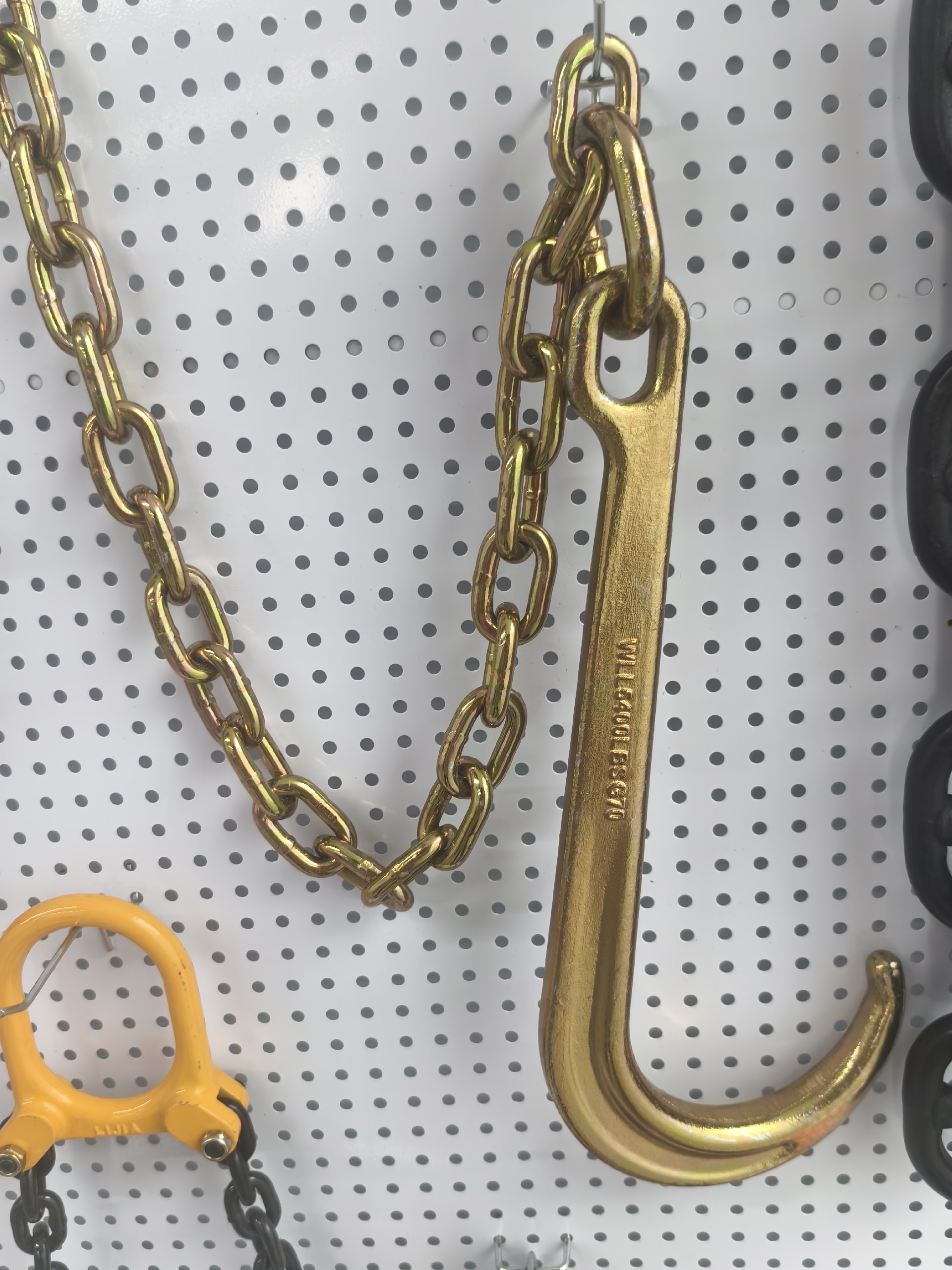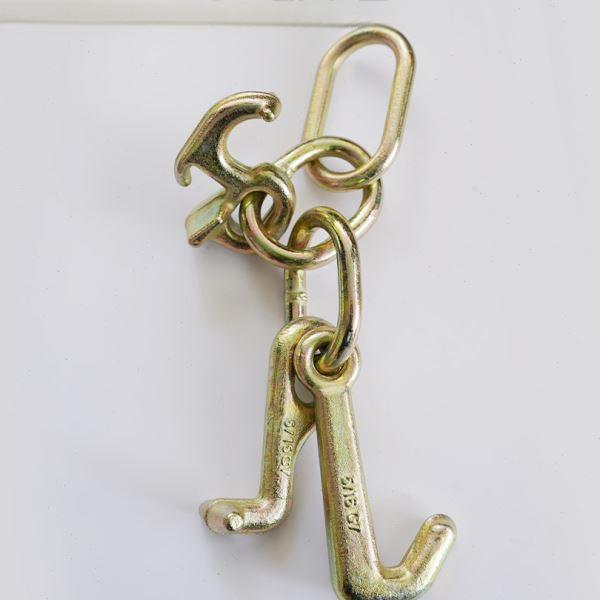Our staff will contact you within 12 hours, You can also contact us through the following ways:
Contact US WhatsApp: +8618766656705
- Email: [email protected]
- Tel: +8618766656705
- Web: https://www.toponechain.com/
You can grab harbor freight tow chains in minutes, yet safe trips demand more than convenience. You still confirm the stamp, match the hooks, and log the chain load rating before the first mile. And because every trailer must carry reliable trailer safety chains harbor freight or equivalent, you also check geometry and slack. This guide explains how these three chain categories differ, how to read labels and standards without guesswork, and how to inspect, rig, and document them so you leave the yard confident and come back the same way.

Retail tow chains usually target transport work: binding loads on flatbeds or pulling disabled vehicles. Packages and link stamps typically show:
Grade mark such as G30/G43/G70 for transport service.
WLL (Working Load Limit), size, and a maker ID.
A clear note like “NOT FOR OVERHEAD LIFTING.”
Use these chains for tie-down and towing tasks only. For any overhead lifting, move to alloy lifting chain that cites EN 818 or ASME B30-series references and shows an alloy grade (e.g., G80/G100). When you tow, choose hooks with spring latches, keep the pull in line, and protect the chain from sharp edges with sleeves or guards.
Heavy equipment chains handle big static loads and sharp dynamic inputs from brakes, bumps, and ramps. You raise the safety margin by:
Selecting G80 or G100 alloy chain when your job includes lifting or when the machine’s weight pushes transport grades to the limit.
Matching hooks, binders, and shackles to the same rating family and verifying stamps on every component.
Spreading load with multiple tie-downs so each chain works within its WLL.
Using edge protection on blade corners, bucket lips, and trailer rails so crowns don’t score.
Re-checking tension after the first fifteen to thirty minutes of travel and again at planned stops.
Keep the chain straight, avoid knotting, and set binders so they lock without cheater bars.
Trailer safety chains harbor freight or any equivalent product serve one job: hold the tongue up if the coupler lets go. You improve control by:
Crossing two chains under the coupler to form a cradle.
Setting just enough slack for tight turns while preventing drag.
Clipping latchable hooks to frame-rated points on the tow vehicle, not to a ball mount that may detach.
Checking that each chain’s WLL meets your trailer’s requirements per the manufacturer’s instructions and local regulations.
Inspecting the chains and hooks before every trip and replacing unreadable or damaged parts.
Item | Primary Use | Typical Grades | Markings You Confirm | Standards You Look For |
Harbor freight tow chains | Transport tie-down, towing | G30 / G43 / G70 | WLL, size, maker ID, “Not for overhead lifting” | FMCSA cargo-securement guidance; maker instructions |
Heavy equipment chains | Securing or lifting machines | G80 / G100 | WLL, grade stamp, size, maker/batch ID | EN 818 family; ASME B30-series for lifting hardware |
Trailer safety chains harbor freight | Emergency retention of trailer tongue | Maker-rated | WLL, size, maker ID; latchable hooks | OEM manual; local road-safety rules; SAE trailer practices |
Always verify the current standard markings on the product you hold in hand; keep the package or data sheet with your records.

Count and spread tie-downs. Use enough chains so each stays inside its WLL.
Read every stamp. Confirm grade, WLL, and maker marks on chain, hooks, binders, and shackles.
Protect edges. Slide sleeves or guards where the chain touches sharp steel or concrete.
Set geometry. Cross trailer safety chains; check binder alignment; avoid twists.
Test movement. Rock the load, pull 1–2 m, stop, and re-tighten as needed.
Log the setup. Note serials, batch IDs when available, and your inspection time.
Follow the manufacturer’s limits and the relevant standard. Many industrial chain programs use measurable thresholds; you keep it objective by:
Measuring pitch over five links; replace the chain if elongation exceeds the maker’s limit.
Gauging crown wear; retire sections that pass the specified loss threshold.
Checking hooks for latch operation and throat opening; scrap hooks that spread or crack.
Looking for cuts, deep pits, and twists; replace compromised links rather than mixing new links into old runs.
Recording inspections in your rigging or fleet log, with photos of stamps and gauges.
You avoid weak links when you:
Pair G70 transport chain with transport-rated hooks and binders for towing jobs, and reserve G80/G100 alloy systems for lifting or extreme duty.
Size shackle pins to fill the link without point loading, and orient the bow toward sling legs when you join multiple lines.
Choose self-locking hooks for lifting because they close under load, and select latchable transport hooks for tie-down so vibration won’t shake them free.
Keep all markings clear; clean off paint overspray and dirt that hide numbers.
Grade Family | Typical Use | Overhead Lifting? | Notes |
G30/G43 | Light tie-down | No | Low WLL; general transport |
G70 | Heavy tie-down / towing | No | Common on retail tow chains |
G80 | Lifting, severe duty | Yes (follow sling/hoist standards) | Alloy steel; stamped links |
G100 | Higher-capacity lifting | Yes (follow sling/hoist standards) | More WLL per diameter |
Use this as a glove-box card, then verify each product’s sheet before the job.
Read the stamps, match the harbor freight tow chains to transport jobs, reserve heavy equipment chains for high-demand work, and rig trailer safety chains harbor freight with correct geometry and slack—contact TOPONE CHAIN now for rated chains, hooks, and documents that meet your next job’s requirements.